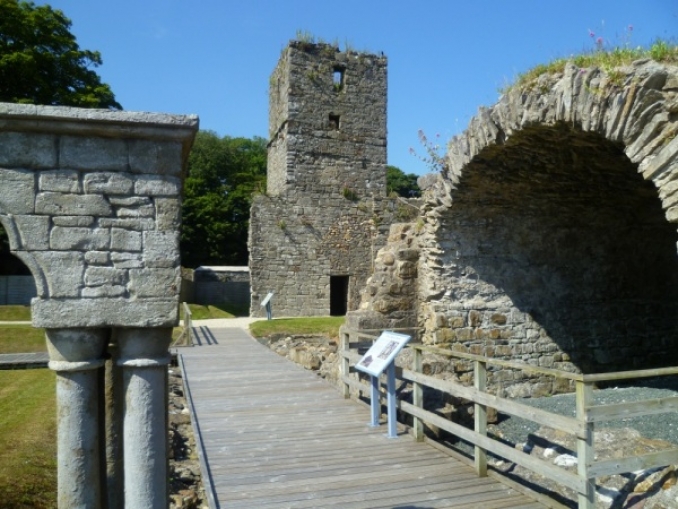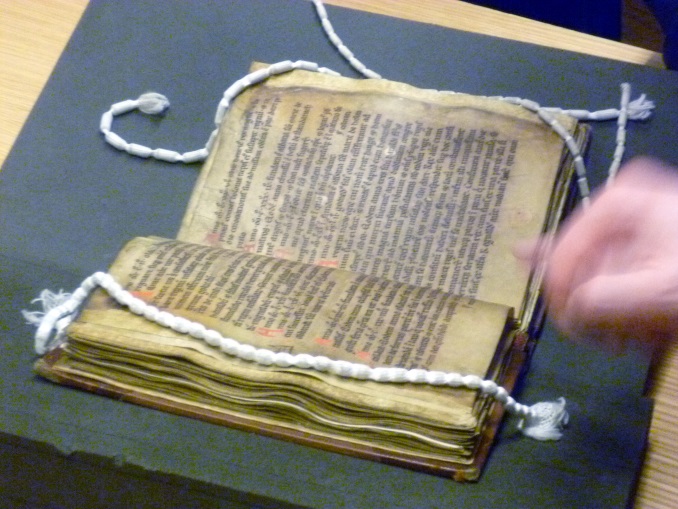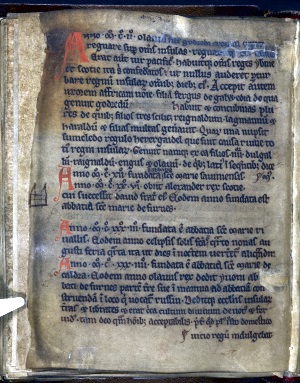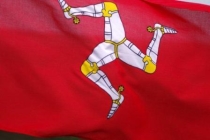Rushen Abbey – Where the Chronicles of the Kings of Mann and the Isles were written

Rushen Abbey was founded in 1134 by Monks of the Sauvignac Order. It stands close to the Manx village of Ballasalla (Manx: Balley Sallagh) on land granted to them by King Olaf I. In 1147 the order came into Cistercian control and by 1257 the Abbey Church was completed. The location of the Abbey was selected due to its close proximity to Castle Rushen (Manx: Cashtell Rosien), which is nearly two miles away in the town of Castletown (Manx: Balley Chashtal) which was the ancient capital of the Isle of Man (Mannin).
Rushen Abbey is associated with the writing of the Chronicles of the Kings of Mann and the Isles. The mediaeval manuscript was compiled around 1257 A.D. at the abbey. They record, in addition to other topics, events in Manx history from 1000 A.D. to 1316 A.D. and look at the Islands place as the centre of the Kingdom of Mann and the Isles. Based on a number of sources, including oral history, this important document is at the present time held in the British Library in London. There has been a long standing campaign to have the Chronicles returned to the Isle of Man were they should rightfully be held.

The campaign to bring the Chronicles of the Kings of Mann and the Isles home to Mannin continues. However, that is not to detract from the expertise of the dedicated staff at the British Library in looking after such ancient and valued manuscripts. Some weeks ago members of Yn Cheshaght Vanninagh Lunnin (The London Manx Society) went to see the Chronicles. It was a privilege to hold this ancient document written in ink on vellum and turn the pages that were inscribed so many centuries ago. The images are those taken on that visit.

The Chronicles narrate the activities of the Norse-Gael Kings who ruled in the Isle of Man, Hebrides and at times parts of Ireland and Scotland. They also catalogue the bishops of Sodor (Man and the Hebrides). Sodor being a Norwegian diocese formed in 1154. The word Sodor derives from the Norse word Suðreyjar meaning Southern Isles; differentiating them from the Northern Isles of Shetland and Orkney which were known to the Norse as Norðreyjar (Northern Isles). Suðreyjar formed the Kingdom of Mann and the Isles (sometimes known as The Kingdom of the Isles) consisting of the Hebrides, the islands in the Forth of Clyde and the Isle of Man.
If you are ever in the Isle of Man then Rushen Abbey is an interesting place to visit. It is preserved by Manx National Heritage and has a building containing artefacts which tell the history of the site and the surrounding area. The remains of the original abbey have had some restoration undertaken and walkways allow visitors to get a close view of the site. The abbey is open between April and October and there is an admission fee. Prior to accessing the abbey gardens, visitors walk through a museum that explains the role of the abbey. There is interactive, audio and video material available.
Further reading
Learn more about Rushen Abbey, which is a stop on our Isle of Manx Southwest Itinerary.
Find out more about the shared history of the Celts and Vikings.
Read about the Battle of Clontarf, the great Irish-Celtic High King Brian Boru and the involvement of Manx Vikings.
- Manx
- English
- Log in to post comments






